Zongzi, the iconic pyramid-shaped sticky rice dumplings wrapped in leaves, are a culinary symbol of China’s Dragon Boat Festival. While the festival’s origins trace back to ancient traditions honoring the poet Qu Yuan, the dish itself has evolved into a regional tapestry of flavors, textures, and techniques. Central to this diversity is the choice of leaves used to wrap the zongzi. In northern China, a specific type of leaf reigns supreme: the bamboo leaf (Indocalamus tessellatus), a humble yet indispensable component that shapes the dumpling’s aroma, texture, and cultural identity. This article explores the science, history, and cultural significance of these leaves, shedding light on why they remain the preferred choice for zongzi makers across northern China.
The Botany of Bamboo Leaves: More Than Meets the Eye
Bamboo leaves, scientifically classified under the Poaceae family, are characterized by their elongated, lanceolate shape and vibrant green hue. The species Indocalamus tessellatus, native to East Asia, thrives in temperate zones, making it abundant in northern China’s hilly and mountainous regions. These leaves are not merely decorative; they serve a dual purpose as both a culinary tool and a natural preservative.
Anatomy and Adaptations
Bamboo leaves are coated with a waxy cuticle that repels moisture, a trait that proves invaluable during the steaming or boiling process required to cook zongzi. This cuticle prevents the leaves from disintegrating under heat, ensuring the dumplings retain their shape. Additionally, the leaves’ fibrous veins provide flexibility, allowing them to be folded into intricate triangular or conical forms without tearing.
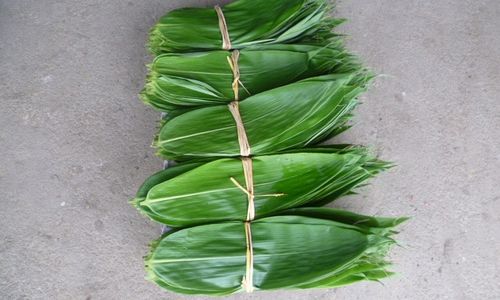
Aromatic Compounds
The leaves’ subtle grassy fragrance, reminiscent of fresh bamboo groves, is no accident. They contain volatile compounds such as lignin and terpenoids, which infuse the sticky rice with a delicate, earthy aroma during cooking. This natural flavoring is a key differentiator from southern zongzi, which often rely on alkaline solutions or additional ingredients like mung beans for taste.
Cultural Symbolism: Leaves as Vessels of Tradition
In northern China, the use of bamboo leaves transcends mere practicality. These leaves emody deeper cultural metaphors rooted in folklore and agricultural cycles.
The Dragon Boat Festival Connection
The Dragon Boat Festival, or Duanwu Festival, commemorates Qu Yuan, a patriotic poet who drowned himself in the Miluo River to protest corruption. Legend holds that locals raced their boats to save him and threw zongzi into the water to prevent fish from devouring his body. Bamboo leaves, with their resilience and protective qualities, symbolize the community’s effort to shield Qu Yuan’s spirit. Their triangular shape is said to resemble the hats worn by ancient scholars, further linking the dish to intellectual and moral integrity.
Seasonal Harvesting Rituals
Bamboo leaves are typically harvested in late spring, just before the Dragon Boat Festival. Families often venture into the mountains to collect fresh leaves, a practice that fosters intergenerational bonding. The leaves are then dried and stored, with some households preserving them in saltwater to enhance their flexibility. This ritual underscores the leaf’s role as a seasonal marker, bridging the gap between nature’s bounty and human tradition.
Culinary Applications: The Art of Zongzi-Making
The process of wrapping zongzi with bamboo leaves is a delicate art form, requiring precision and patience.

Preparation Techniques
Before use, the leaves are soaked in water for several hours to soften their fibers. Some cooks boil them briefly to release their aroma and kill any microorganisms. Once pliable, the leaves are folded into a cone or pyramid, filled with a mixture of glutinous rice, red bean paste, or jujubes, and sealed with string or additional leaves. The result is a tightly packed dumpling that steams evenly, ensuring the rice cooks to a sticky, translucent perfection.
Flavor Infusion
The leaves’ porous structure allows them to absorb and release flavors during cooking. When steamed, the rice absorbs the leaves’ lignin-derived compounds, creating a subtle bitterness that balances the dumpling’s sweet or savory fillings. This interplay of flavors is unique to bamboo leaves; artificial wrappers or alternative leaves, such as lotus or banana, fail to replicate this effect.
Regional Variations: North vs. South
While bamboo leaves dominate northern zongzi recipes, southern China favors different leaves, reflecting regional ecological and culinary preferences.
Northern Zongzi: Simplicity and Earthiness
Northern zongzi are typically smaller and less sweet than their southern counterparts. The bamboo leaves’ minimalist flavor profile allows the rice’s natural starchiness to shine, complemented by fillings like jujubes or chestnuts. The leaves’ sturdy texture also permits longer steaming times, resulting in a chewier, more resilient dumpling.
Southern Zongzi: Exotic and Bold
In contrast, southern zongzi often use reed leaves (Phragmites australis) or pandan leaves, which impart a stronger, almost herbal aroma. These leaves are thinner and more fragile, necessitating shorter cooking times. Southern fillings, such as salted egg yolks or pork, benefit from the leaves’ assertive flavor, creating a richer, more complex taste.
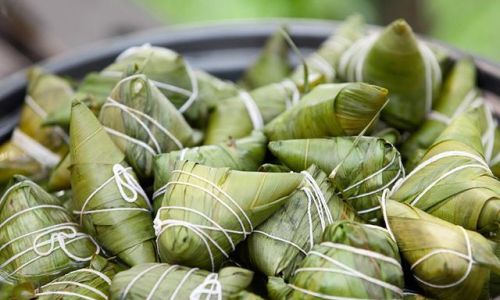
Environmental and Economic Impact
The reliance on bamboo leaves has significant ecological and economic implications for northern China.
Sustainability
Bamboo is a fast-growing, renewable resource, making it an eco-friendly choice compared to synthetic wrappers. Many northern communities practice sustainable harvesting, cutting only mature leaves to ensure the plant’s regeneration. This approach aligns with China’s broader efforts to promote green agriculture and reduce plastic waste.
Rural Livelihoods
Bamboo leaf harvesting provides supplemental income for farmers in regions like Shaanxi and Shanxi. During peak season, families earn money by collecting, drying, and selling leaves to urban markets or zongzi manufacturers. This cottage industry, while small-scale, preserves rural traditions and supports local economies.
Challenges and Innovations
Despite their cultural significance, bamboo leaves face modern challenges, including urbanization and changing consumer preferences.
Urbanization and Accessibility
As cities expand, natural bamboo groves are increasingly replaced by infrastructure, limiting access to fresh leaves. Urban dwellers often rely on dried or pre-packaged leaves, which lack the fragrance and flexibility of fresh ones. Some entrepreneurs have responded by cultivating bamboo in suburban areas, but the taste difference remains noticeable.
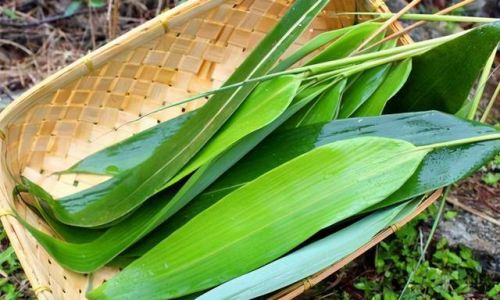
Modern Alternatives
Innovations like vacuum-sealed leaves or biodegradable wrappers made from cornstarch are gaining traction. While these alternatives offer convenience, they struggle to replicate the bamboo leaf’s sensory experience. Purists argue that the loss of tradition outweighs the benefits of modernization.
Global Influence: Bamboo Leaves Beyond China
Bamboo leaves have inspired culinary traditions worldwide, from Japanese chimaki to Vietnamese bánh ú. However, northern China’s zongzi remains the most iconic application.
Cross-Cultural Adaptations
In Southeast Asia, bamboo leaves are used to wrap sticky rice dishes like lo mai gai, though these often incorporate savory fillings like chicken or mushrooms. The leaves’ ability to withstand high heat and impart a mild flavor makes them versatile in global cuisines.
Scientific Research
Recent studies have explored bamboo leaves’ potential health benefits. Their high lignin content may aid digestion, while antioxidants like chlorogenic acid are believed to reduce inflammation. These findings could fuel renewed interest in bamboo leaves as a functional food ingredient.
Conclusion: The Enduring Legacy of Bamboo Leaves
The bamboo leaf’s role in northern zongzi is a testament to the interplay between nature, culture, and cuisine. From its botanical adaptations to its symbolic resonance, this humble leaf embodies the resilience and ingenuity of Chinese culinary traditions. As modernity reshapes food systems, the bamboo leaf stands as a bridge between past and present—a reminder that even the simplest ingredients can hold profound stories. Whether wrapped in tradition or innovation, the bamboo leaf’s legacy in zongzi-making ensures its place at the heart of China’s cultural heritage.
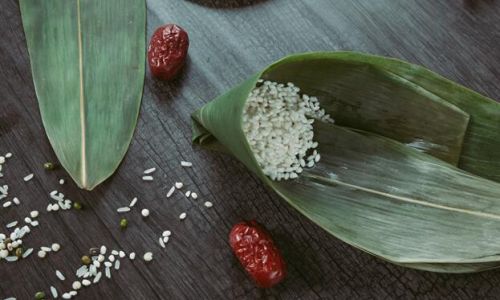
Word Count: 1,775

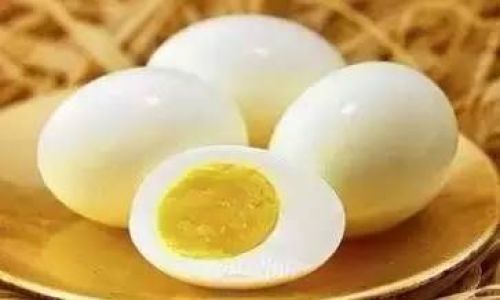

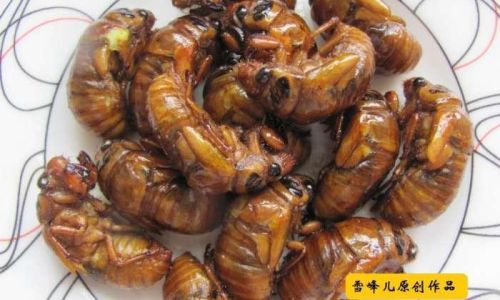
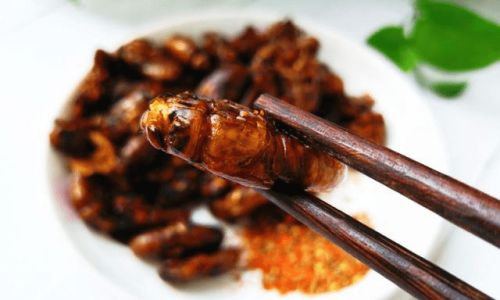
0 comments